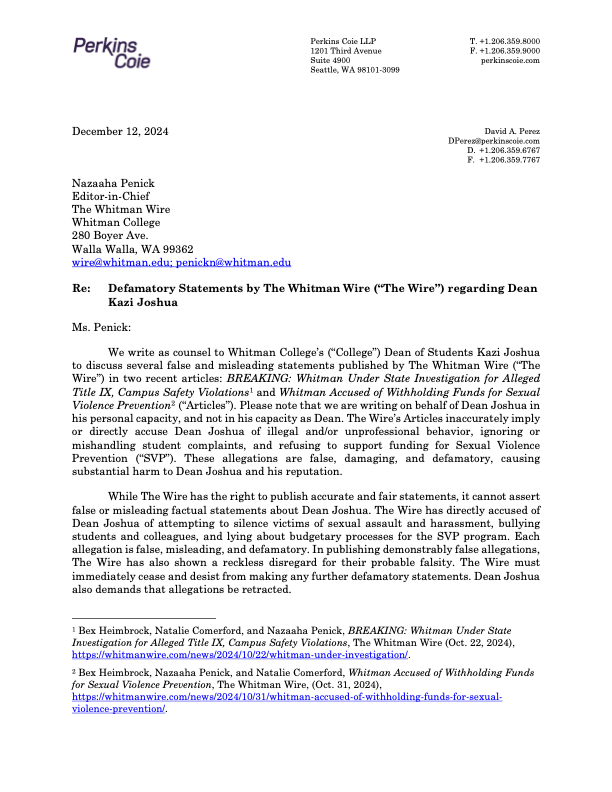After a month of planning, Bon Appétit’s third annual Eat Local Challenge took place this past Tuesday, Sept. 25. “Each year it gets easier,” Prentiss Hall Manager Susan Todhunter said of the event, which features a meal made from ingredients found within 150 miles of campus (with the exception of salt).
“It’s fun to figure out what you can do,” said Todhunter, describing how Bon Appétit is able to find new resources near Walla Walla every year. This year’s menu featured a variety of local ingredients, such as a Toscana wrap with Cougar cheddar cheese from WSU and a variety of local peppers. They also served Thundering Hooves beef from Walla Walla and used flour from Reardon, Wash.
“Because Bon Appétit is enthusiastic about food, it’s only logical that we try to get the freshest ingredients,” said Todhunter. “When we are able to find local produce, we utilize it.” This year, Bon Appétit worked with 16 to 20 farmers to come up with the ingredients needed for the meal.
Eating local foods rather than shipped materials is healthier, as studies show that fresh produce loses nutrients rapidly. Currently, food within the United States travels an average of 1,500 miles. Local food is not genetically modified, is more environmentally friendly, supports local families and encourages crop diversity.
The Eat Local Challenge proved to be popular among students. “More people came to lunch,” Todhunter said. “People are becoming more receptive to figuring out how to eat sustainable.”
“We went specifically for the purpose of the Eat Local Challenge,” said Nora Hawkins, a senior who is not on a meal plan. “The tofu and vegetables were delicious.”
“I think it’s an admirable endeavor, because it’s important to support our local farmers, especially because we live in a small town,” Hawkins said.
On a regular basis, Bon Appétit tries to use local products as much as possible as part of their “Farm to Fork” initiative, which spent over $55 million on local producers in 2006. “Currently, most of these farms don’t have enough volume for the number of students we serve. But we get local stuff as long as we can,” Todhunter said.
This year, for the first time, Bon Appétit was able to use oil in the meal. As a result, they were able to make tortillas for fajitas.
This was thanks to the products of AprèsVin, a Prosser company that sells oils made entirely from grape seeds. Owner Eric Leber, a Ph.D. in chemistry, came to the Reid Campus Center on Tuesday at lunch to showcase his products and let students taste his many oils.
“We don’t throw out anything,” Leber said, pointing to the flour he makes using the grape skins. To make the oils, he gets pomace (remains of the grapes left over after the winemaking process) from wineries. He then separates and dries the seeds and puts them through an expeller press. The oil is squeezed out: it makes up 10 percent of the weight of a seed: and the sediment falls to the bottom of the collection tanks, where it is removed and used for other products.
“Grape seed oil has existed for two hundred years in Europe,” Leber said, “but all the other brands are generic. We’re new in terms of scope and variety.” AprèsVin sells several different types of oil, like the Riesling, Chardonnay and Merlot varieties. The grape-seed oil contains more healthy polyunsaturated oils and vitamin E than regular olive or canola oil.
“It promotes sustainable winemaking,” said Leber, who started the business in April 2007.
Bon Appétit was thrilled to find Leber and hopes to forge more relationships with local producers in the future. “We’re hoping as more farmers find an outlet for their products, they will produce more,” Todhunter said. “We hope there is a resurgence of farmers, rather than them going out of business due to corporate farms.” Currently, less than two percent of the population grows our food, as compared to 95 percent 200 years ago.
For more information about eating local, visit growingformarket.com.




